.
| Outdoor Literature |
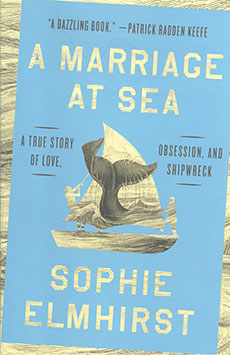 Winner. A Marriage at Sea: A True Story of Love, Obsession and Shipwreck. By Sophie Elmhirst. Riverhead Books/Penguin Random House, New York
Winner. A Marriage at Sea: A True Story of Love, Obsession and Shipwreck. By Sophie Elmhirst. Riverhead Books/Penguin Random House, New York
It was 1973 and Maurice and Maralyn Bailey were having the time of their lives. They had sold their house and possessions, fitted out a 31-foot boat, and took off sailing to New Zealand. The couple had just made it to the Pacific Ocean when suddenly their boat shuttered. Books flew off the shelves in the galley. The hull cracked and water started pouring in. They barely had enough time to gather some food and survival gear and throw it in an inflatable raft before the boat sank. Their liferaft was four-and-half feet in diameter, barely enough room for them to sit, much less sleep. They had no radio. Adrift and alone, their hope was to wave down a passing ship. On rare occasions, they sighted one, but they were always too far in the distance to be seen. The days passed into weeks. Weeks passed into months. To survive they needed all of what little resources they had — and they needed one another. Recounted in crystal-clear clarity, A Marriage at Sea is storytelling perfection.
![]()
| Journeys | |
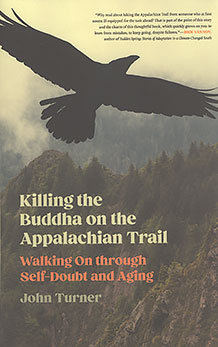 Winner. Killing the Buddha on the Appalachian Trail: Walking On Through Self-doubt and Aging. By John Turner. The University of Georgia Press, Athens
Winner. Killing the Buddha on the Appalachian Trail: Walking On Through Self-doubt and Aging. By John Turner. The University of Georgia Press, Athens
There have been a good many books written about the Appalachian Trail. On occasion, one comes along that stands out from the crowd. Killing the Buddha on the Appalachian Trail is one. You don’t have to read very far to learn something about John Turner’s writing. It’s good. Darn good. His descriptions of the trail, the good and bad days, and the kindness and camaraderie of fellow hikers are so well done that you immediately find yourself in the story. His approach is a thoughtful one, drawing wisdom from other writers and thinkers and even a bit from Buddhism. It’s not all about the trail. We get glimpses of his life off the trail, and he shares his regret over past failures. Maybe those failures are real and maybe they are just imagined. But this book is no failure. It is a marvelous success.
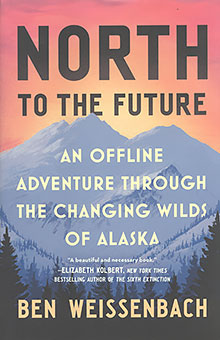 Winner. North to the Future: An Offline Adventure Through the Changing Wilds of Alaska. By Ben Weissenbach. Grand Central Publishing, New York
Winner. North to the Future: An Offline Adventure Through the Changing Wilds of Alaska. By Ben Weissenbach. Grand Central Publishing, New York
Ben Weissenbach is a neophyte when it comes to wilderness travel in the Alaskan bush. Klondike miners of the late 1800s would call him a “cheechako.” Yet, with a little luck, he manages to land a spot on a small biological research team for a 42-day, 360-mile journey by foot and packraft across the eastern Brooks Range. As the Arctic warms faster than the rest of the globe, the team is trying to understand the changes occurring there, but it is an unforgiving place for research. Right off the bat, a grizzly stalks the group. All their research gear is carried on their backs, and the pace never lets up. Weissenbach makes rooky mistakes, but he sticks with it, and the book that results from this journey and several other Alaskan experiences is outstanding. When it comes to writing, Weissenbach is no cheechako. He captures it all masterfully: the larger-than-life personalities that he comes across, the interactions, the starkness and beauty of the Alaskan wilderness, and the complexities of understanding a warming climate.
![]()
| History/Biography |
 Winner. A Woman Among Wolves: My Journey Through Forty Years of Wolf Recovery. By Diane K. Boyd. Greystone Books, Vancouver
Winner. A Woman Among Wolves: My Journey Through Forty Years of Wolf Recovery. By Diane K. Boyd. Greystone Books, Vancouver
A Woman Among Wolves is the captivating story of Diane Boyd’s work as a wildlife biologist studying wolves. Often alone in remote northern Montana, she encounters cougars, grizzly bears and, of course, wolves. In one instance, she is in her vehicle and glances in the rearview mirror to see the wild eyes of a wolf staring at her from the back seat. The wolf, recently captured and anesthetized, has come to life far earlier than she expected. Boyd is an engaging writer, splendidly capturing what it is like to be a researcher in remote areas. Through her stories and experiences, we learn much about wolves, their behavior, and the controversies swirling around their reintroduction in the west.
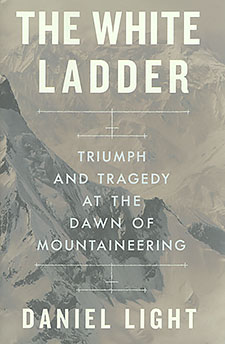 Winner. The White Ladder: Triumph and Tragedy at the Dawn of Mountaineering. By Daniel Light. W. W. Norton, New York
Winner. The White Ladder: Triumph and Tragedy at the Dawn of Mountaineering. By Daniel Light. W. W. Norton, New York
In this sweeping, exceedingly readable history of mountaineering, Daniel Light covers the events and personalities from ancient history up to the 1920’s when the British had set their sights on Everest. What keeps the book moving along is the rivalry among climbers to ascend ever higher mountains. By the end of the book, the highest, Mt. Everest remains unclimbed — or has it? Find out more in this excellent work of scholarship and the exploration of the heights.
![]()
| Natural History Literature |
 Winner. Born of Fire and Rain: Journey into a Pacific Coastal Forest. By M. L. Herring. Yale University Press, New Haven, CT
Winner. Born of Fire and Rain: Journey into a Pacific Coastal Forest. By M. L. Herring. Yale University Press, New Haven, CT
Originally from the East, author M. L. Herring and her husband settled in Oregon’s Coast Range. It was the beginning of a 50-year love affair with the Pacific temperate rainforest. She is an ecologist, science writer and artist, and in her forest home, her work and life are one. In Born of Fire and Rain she first accustoms us to the forests of western Oregon and Washington, and then she takes us on a series of field trips. She guides us through the geological cataclysms that have shaped the landscape, leads us through old growth forests, pointing out the age and height of the giants, takes us upward to explore the secret vibrance of the canopy, and brings us back down to the underworld of the forest floor with its insects, fungi, bacteria — recycling old life into new. It's a lovely book, punctuated with illustrations from the Herring’s sketchbooks which she carried on her many forest journeys. The book is passionate, at times poetic, in which natural history, art, and care for the natural environment converge elegantly.
![]()
| Nature and the Environment |
 Winner. Saving the Big Sky: A Chronicle of Land Conservation in Montana. By Bruce A. Bugbee, Robert J. Kiesling, John B. Wright. Photographs by Kevin League. Oregon State University Press, Corvallis
Winner. Saving the Big Sky: A Chronicle of Land Conservation in Montana. By Bruce A. Bugbee, Robert J. Kiesling, John B. Wright. Photographs by Kevin League. Oregon State University Press, Corvallis
If you want a success story of what can be done when it comes to land conservation, look no farther than Montana. Over a 50-year period, six million acres of land have been conserved. It wasn’t easy, of course. It took the cooperative efforts of Native American tribes, nonprofit organizations, land trusts and government agencies. The tool central to those efforts was the ability to establish legally binding conservation easements on private land. This is the history of those efforts: how it was done and what was protected. It’s all packaged in a beautifully designed and photographed book.
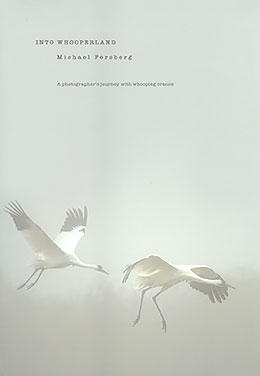 Silver Medalist. Into Whooperland: A Photographer’s Journey with Whooping Cranes. Photographs and text by Michael Forsberg. Michael Forsberg Photography, Lincoln, NE
Silver Medalist. Into Whooperland: A Photographer’s Journey with Whooping Cranes. Photographs and text by Michael Forsberg. Michael Forsberg Photography, Lincoln, NE
This is a work of wonder. It’s about a bird that has come back from the brink of extinction. In 1941, the whooping crane, North America’s tallest bird, and among the most elegant, only numbered 22 individuals. With new laws and the help of government agencies and private organizations, it now numbers 700. Over a four-year period, photographer Michael Forsberg followed the birds, spending countless hours in blinds, including one stay in a blind that lasted eight days. During that long stay, he was rewarded with the sight of one of nature’s miracles: the emergence of cranes from eggs. In addition to hundreds of hours in the field, he enlisted a pilot friend to fly a small plane on a three-week journey, tracing the whooping cranes spring migration path. The aerial photographs taken during that flight whisk you along the path of the bird’s remarkable journey, allowing you to look down from the crane’s perspective at the patterns of the earth below. Altogether, Into Whooperland is an inspiring and breathtaking work of art.
 Silver Medalist. People the Planet Needs Now: Voices for Justice, Science, and a Future of Promise. By Dudley Edmondson. Adventure Publications, Cambridge, MN
Silver Medalist. People the Planet Needs Now: Voices for Justice, Science, and a Future of Promise. By Dudley Edmondson. Adventure Publications, Cambridge, MN
Page through this book, and you’ll see nothing but black and brown faces. These are indigenous individuals and people of color who are working towards solving environmental problems. Some of the 25 individuals profiled in the book work on issues involving clean air, safe drinking water, and open spaces. Others strive to provide opportunities for outdoor experiences. Still others are research biologists, science and environmental educators. Dudley Edmondson allows each to tell their own story. We learn about the challenges they and their communities face, how they’ve met those challenges, and their determination to create a better world.
![]()
| Design & Artistic Merit |
 Winner. Smithsonian Trees of North America. By W. John Kress. Yale University Press, New Haven, CT
Winner. Smithsonian Trees of North America. By W. John Kress. Yale University Press, New Haven, CT
“Awestruck” is what one judge wrote. Another who has reviewed, and evaluated books for over 20 years, awarded Smithsonian Trees of North America his highest score ever. W. John Kress has left no leaf unturned: over 800 pages of authoritative information, supplemented with several thousand photographs, with not one photograph out of focus. The book is so well designed, so well written and organized, that anyone can benefit from it whether you have a passing interest in trees or an advanced degree in botany. This is an exceptional work, a book at the very top of its game.
![]()
| Classic |
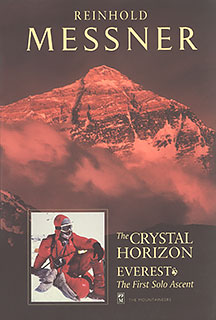 Winner. The Crystal Horizon: Everest – The First Solo Ascent. By Reinhold Messner. The Mountaineers, Seattle
Winner. The Crystal Horizon: Everest – The First Solo Ascent. By Reinhold Messner. The Mountaineers, Seattle
This is the story of one of mountaineering’s greatest achievements: the first solo ascent of Mt. Everest. The Crystal Horizon, Reinhold Messner’s account of the climb, was first released in 1982. Since that first edition, the book has been published in at least six different languages. What amazed the climbing world at the time is that Messner climbed without the help and support of other climbers — an unheard-of proposition when it comes to great peaks of the Himalaya. There’s more. Ascending alone, through the death zone, that area above 8,000 meters where the air is so rarefied that body functions deteriorate, he did so without using supplemental oxygen, all the while managing in one remarkable push, to pioneer a new route to the summit.
![]()
| Children's Category |
 Winner. Armando & the Amazing Animal Race. By Diana Schaffter. Sea Otter Press,
Winner. Armando & the Amazing Animal Race. By Diana Schaffter. Sea Otter Press,
Austin, TX
Get ready for a grand adventure in this fast-paced novel. It’s about 12-year-old Armando and his grandmother who take off on the Amazing Animal Race to photograph seven endangered animals in seven different countries. The winner of the race gets a $200,000 prize. There’s plenty of intrigue among the competing teams: There’s Max McCoy, a shady character who is not afraid to twist the rules to his benefit. There’s Dr. Higginbottom, the haughty professor and his spoiled brat of a nephew who mysteriously always turn up at the same time and place as Armando and his grandmother. And then there’s the race’s suspicious financial supporter, Purple Flamingo Cosmetics. The story is as authentic as it gets. In fact, to research the book, author Diana Schaffter travelled to all seven countries to search out and photograph each of the same endangered animals covered in her story. For children 8 to 12.
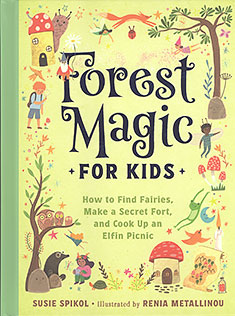 Silver Medalist. Forest Magic for Kids: How to Find Fairies, Make a Secret Fort, and Cook Up an Elfin Picnic. By Susie Spikol. Illustrations by Renia Metallinou. Gibbs Smith, Kaysville, UT
Silver Medalist. Forest Magic for Kids: How to Find Fairies, Make a Secret Fort, and Cook Up an Elfin Picnic. By Susie Spikol. Illustrations by Renia Metallinou. Gibbs Smith, Kaysville, UT
Science has taught us so much about the natural world, but nature is also a world of mystery and wonder. In this bewitching book of discovery, Susie Spikol combines science with fantasy and imagination. She leads children in the 5-9 age group on a series of adventures. She takes them to find their own “world tree,” or explains how to create pixie dust, or leads them through the steps to make spore prints from a mushroom. On all adventures, children are reminded to bring along a “secret notebook” to record in words and drawings what they see. Along with Renia Metallinou’s colorful and fanciful illustrations, it’s a lovely book which will excite young minds and help them discover magic in the outdoor world.
![]()
| Nature Guides |
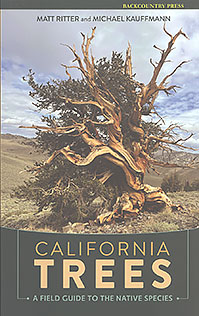 Winner. California Trees: A Field Guide to the Native Species. By Matt Ritter and Michael Kauffmann. Backcountry Press, Kneeland, CA
Winner. California Trees: A Field Guide to the Native Species. By Matt Ritter and Michael Kauffmann. Backcountry Press, Kneeland, CA
California is blessed with a great variety of landforms and scenic vistas, but it would be nothing without its trees. Matt Ritter and Michael Kauffman’s new guide is the perfect vehicle to learn about and identify California trees. It covers all of the state’s 95 native species and does so in a thoughtful, organized way. Sections in the book are color coded, getting you quickly to the two main groupings: conifer or flowering trees. Each tree includes three to four photos, a location map, and identification details. Great design, good information, and just the right size for a pack, California Trees does the job and does it well.
![]()
| Outdoor Adventure Guides |
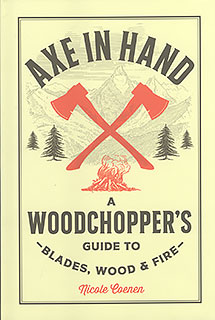 Winner. Axe in Hand: A Woodchopper’s Guide to Blades, Wood and Fire. By Nicole Coenen. Cool Springs Press, Beverly, MA
Winner. Axe in Hand: A Woodchopper’s Guide to Blades, Wood and Fire. By Nicole Coenen. Cool Springs Press, Beverly, MA
There’s nothing like sitting around with your legs propped up, enjoying the warmth of a fire in a wood stove. But before using the stove, there’s always the matter of getting wood for it. That’s where Nicole Coenen’s Axe in Hand comes in handy. She covers everything you could possibly ever need to know about chopping wood: selecting an axe for the job, sharpening it, replacing handles, reading the wood before splitting, dealing with stuck axes, and more. Coenen has got it wired, having done loads of chopping, including belonging to a group that bucked and split wood to help generate funds for needy organizations. Throughout the book, she is pictured in crisp color photos, demonstrating various chopping and splitting techniques. Whether you’re an experienced chopper or just getting started, you can’t go wrong with this excellent guide.
 Silver Medalist. Hiking Trails of Mainland Nova Scotia. By Michael Haynes. Goose Lane Editions. Fredericton, New Brunswick
Silver Medalist. Hiking Trails of Mainland Nova Scotia. By Michael Haynes. Goose Lane Editions. Fredericton, New Brunswick
Michael Haynes is tenacious. When new trails are developed, old trails change or become unusable, he’ll keep you updated. In fact, this is the 10th edition of his popular guide to trails of Nova Scotia — and it’s a beaut. Full color throughout with excellent maps and equally excellent trail descriptions, you won’t find a better hiking guide to this lovely province with its rocky coastlands, lush forests, and rolling hills.
![]()
| Work of Significance |
|
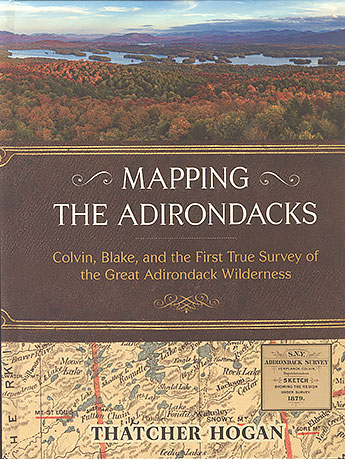 Winner. Mapping the Adirondacks: Colvin, Blake and the First True Survey of the Great Adirondack Wilderness. By Thatcher Hogan. North Country/Globe Pequot, Essex, CT
Winner. Mapping the Adirondacks: Colvin, Blake and the First True Survey of the Great Adirondack Wilderness. By Thatcher Hogan. North Country/Globe Pequot, Essex, CT
Every so often a book is entered in the National Outdoor Book Awards that doesn’t quite fit in one of the award categories. Yet, it so impresses the judges that they vote to give it a special award: “A Work of Significance.” Mapping the Adirondacks is clearly deserving of this honor. It follows the endeavors of two intrepid surveyors Verplanck Colvin and Mills Blake who from the mid to late 1800s undertook the audacious task of making an accurate map of the Adirondacks. Author Thatcher Hogan cleverly combines a slice of history with elements of a guidebook. We are invited to hike to mountain summits which Colvin used as mapping reference points. From those high points you can identify surrounding distant summits using one of Hogan’s graphical “peak finders.” It’s a colorful, handsomely designed book, brimming full of maps, illustrations and historical photos. If you love maps — or ambling in the Adirondaks — this is the book for you.
![]()
Note that a Silver Medal is not awarded in every category. It is only awarded when the winner and second place book are very closely scored.
Official NOBA reviews prepared by Ron Watters. Reviews are based on comments and insights provided by members of the judging panels. A special thanks to Katherine Daly for her editorial work. No artifical intelligence (AI) was employed in the preparation of these reviews.
| End of Listing: 2025 National Outdoor Book Awards |
f
Judges Natalie Bartley, Boise, ID Louis Dzierzak, Minneapolis, MN Dale Harrington, Boone, NC Rob Jones, Salt Lake City, UT Paul Kallmes, Oakland, CA Hannah Lehmkuhl, Salt Lake City, UT Rodney Ley, Fort Collins, CO Kate Mapp, Heber City, UT John Miles, El Prado, NM Jill Morgan, Cynthiana, KY Anders Morley, Littleton, NH James Moss, Littleton, CO Tom Mullin, Richmond, ME Tammie L. Stenger-Ramsey, Bowling Green, KY Ann Weiler Walka, Flagstaff, AZ Ron Watters, Pocatello, ID Melanie Wulf, Des Moines, IA
|
Top of Page

